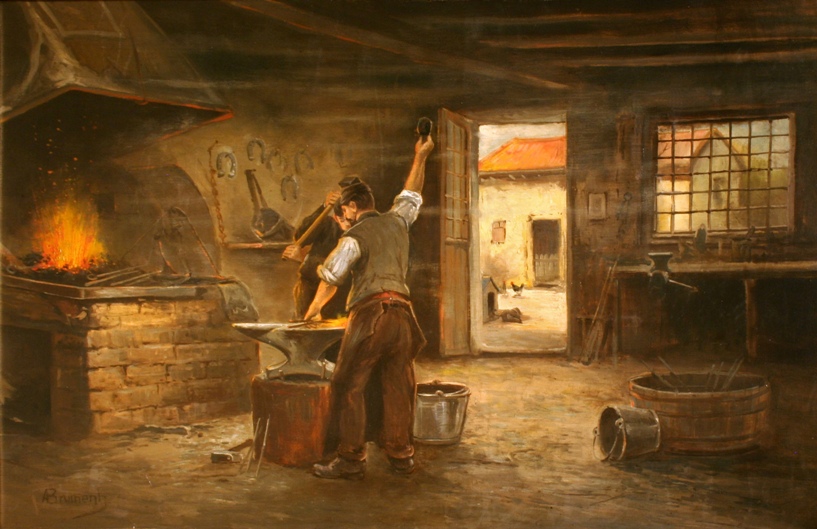“An April Day” was written by Henry Wadsworth Longfellow, where he describes a day in April. It is a beautiful portrayal that consists of minute details that only come after a great deal of observation. An April Day poem analysis is composed of eight stanzas with (abab) rhyming scheme. It is full of imagery and a romantic (that pertains to nature) poem. “An April Day” is about the month of spring in the United States of America. The poet here in the poem is celebrating its arrival. The poem has a joyous tone.
An April Day Poem: Summary
The first stanza introduces us to the spring season; the poet tells us that the sun has returned, as we know that in the process of photosynthesis, sun rays play a major role. This is what the poet is talking about in this stanza, where he says that the sun “brings/ Seed-time and harvest.” The seeds need the sun to grow into plants/trees, and similarly, the fruits need the sun to ripen, and that very entity is back after such a long time. In the spring, the sun appears after a long break from the previous season. Now the poet is excited about visiting the woods because this is when new flowers come up, and a variety of vegetation is seen sprouting all over the plain. It is actually the most beautiful scenery that can’t be missed. In the second stanza, the poet explains why he loves this season so much.
He says that this is when the marshy land of the forest is covered with colourful and bright flowers and all sorts of plants. This new growth fills the forest with new life, and the atmosphere of the forest is chirpy and gay. In other seasons the country is prone to storms and sudden rain, one, therefore, is not mentally free, but this is the time of the year when there are no dark clouds to be seen in the sky, no natural indications of upcoming storms. So basically, the poet is trying to say that April is the month of freshness and freedom, everything bright and beautiful.
The third stanza is the description of the growth of the new saplings. The poet explains the natural process of the germination of a seed, the seed that got cold due to the winters still survives the harsh climatic condition deriving its needs for sustenance from the loose soil. It is spring when the almost-dead trees come back to life. It’s like the winter is a test and the spring results from passing that test. In the fourth stanza, the poet narrates the secondary gifts the spring brings along with it. It is the music of the birds. During the spring, the birds are full of happy moods and sing to their brim. It is the joy of nature that fills the area with an extreme sense of colour and music; the beautiful birds fly under the sun spreading the colours of nature and soothing sounds to the witnesses’ ears.
The fifth stanza is a continuity of the praise of nature. The poet is drawing a picture of the forest and the hills that are stunning to look at. This stanza is the most picturesque of all in the poem. It suggests the level of imagination of the poet, which is extreme. We, as readers, can actually see a glowing mountaintop with the forests shining in and out. According to the poet, this is what the sunlight does to the “silver wood” and the “hollows of the hills,” according to the poet. In the sixth stanza, the poet is now reaching the end of a day in the spring season. It is the time of the evening in these lines. This stanza, too, is full of imagery, here, the poet is narrating about the reflection the night sky causes in the water below it, and in the poem, it is a lake appearing as a sky with the moon in it. The poet creates an amazing portrait of the moon and stars in the lap of the lake shining magnificently.
The seventh stanza can be said to be the continuation of the sixth stanza. Here too, the poet paints the picture of reflections caused at night. Like the moon, the vegetation and hills cast a shadow in the water and seem to be inverted. When the water of the lake trembles, it gives the effect of the trembling rocks and trees. The poet imagines the trees looking at their shadows in the water and thinking they have stepped down and come below. In the last stanza, the poet bids adieu to the spring season with a promise to wait for it to come the next time. He says that there are so many memories attached to this season, just like the hearts of two lovers are bonded together. He says that “life’s golden fruit is shed” after it reaches autumn.
The poem begins with the arrival of spring; the sun is up and warm, and the poet is out in the forest to enjoy the natural beauty at the moment. The poem continues to describe nature and the magnificence it spreads at the time of spring. And ends on a romantic note where the poet claims to love this time of the season forever. This poem is a delightful read for all nature lovers and everyone else too. It takes us on a joy ride in the forests filled with flowers and bees.
Updated by Anjali Roongta on 18th April 2023.
Some online learning platforms provide certifications, while others are designed to simply grow your skills in your personal and professional life. Including Masterclass and Coursera, here are our recommendations for the best online learning platforms you can sign up for today.
The 7 Best Online Learning Platforms of 2022
- Best Overall: Coursera
- Best for Niche Topics: Udemy
- Best for Creative Fields: Skillshare
- Best for Celebrity Lessons: MasterClass
- Best for STEM: EdX
- Best for Career Building: Udacity
- Best for Data Learning: Pluralsight














